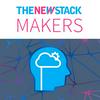346 episodios

How Nutanix Is Taming Operational Complexity
18/12/2025 | 15 min
Most enterprises today run workloads across multiple IT infrastructures rather than a single platform, creating significant operational challenges. According to Nutanix CTO Deepak Goel, organizations face three major hurdles: managing operational complexity amid a shortage of cloud-native skills, migrating legacy virtual machine (VM) workloads to microservices-based cloud-native platforms, and running VM-based workloads alongside containerized applications. Many engineers have deep infrastructure experience but lack Kubernetes expertise, making the transition especially difficult and increasing the learning curve for IT administrators. To address these issues, organizations are turning to platform engineering and internal developer platforms that abstract infrastructure complexity and provide standardized “golden paths” for deployment. Integrated development environments (IDEs) further reduce friction by embedding capabilities like observability and security. Nutanix contributes through its hyper converged platform, which unifies compute and storage while supporting both VMs and containers. At KubeCon North America, Nutanix announced version 2.0 of Nutanix Data Services for Kubernetes (NDK), adding advanced data protection, fault-tolerant replication, and enhanced security through a partnership with Canonical to deliver a hardened operating system for Kubernetes environments.Learn more from The New Stack about operational complexity in cloud native environments:Q&A: Nutanix CEO Rajiv Ramaswami on the Cloud Native Enterprise Kubernetes Complexity Realigns Platform Engineering Strategy Platform Engineering on the Brink: Breakthrough or Bust? Join our community of newsletter subscribers to stay on top of the news and at the top of your game. Hosted by Simplecast, an AdsWizz company. See pcm.adswizz.com for information about our collection and use of personal data for advertising.

Do All Your AI Workloads Actually Require Expensive GPUs?
18/12/2025 | 29 min
GPUs dominate today’s AI landscape, but Google argues they are not necessary for every workload. As AI adoption has grown, customers have increasingly demanded compute options that deliver high performance with lower cost and power consumption. Drawing on its long history of custom silicon, Google introduced Axion CPUs in 2024 to meet needs for massive scale, flexibility, and general-purpose computing alongside AI workloads. The Axion-based C4A instance is generally available, while the newer N4A virtual machines promise up to 2x price performance.In this episode, Andrei Gueletii, a technical solutions consultant for Google Cloud joined Gari Singh, a product manager for Google Kubernetes Engine (GKE), and Pranay Bakre, a principal solutions engineer at Arm for this episode, recorded at KubeCon + CloudNativeCon North America, in Atlanta. Built on Arm Neoverse V2 cores, Axion processors emphasize energy efficiency and customization, including flexible machine shapes that let users tailor memory and CPU resources. These features are particularly valuable for platform engineering teams, which must optimize centralized infrastructure for cost, FinOps goals, and price performance as they scale.Importantly, many AI tasks—such as inference for smaller models or batch-oriented jobs—do not require GPUs. CPUs can be more efficient when GPU memory is underutilized or latency demands are low. By decoupling workloads and choosing the right compute for each task, organizations can significantly reduce AI compute costs.Learn more from The New Stack about the Axion-based C4A: Beyond Speed: Why Your Next App Must Be Multi-ArchitectureArm: See a Demo About Migrating a x86-Based App to ARM64Join our community of newsletter subscribers to stay on top of the news and at the top of your game. Hosted by Simplecast, an AdsWizz company. See pcm.adswizz.com for information about our collection and use of personal data for advertising.

Breaking Data Team Silos Is the Key to Getting AI to Production
17/12/2025 | 30 min
Enterprises are racing to deploy AI services, but the teams responsible for running them in production are seeing familiar problems reemerge—most notably, silos between data scientists and operations teams, reminiscent of the old DevOps divide. In a discussion recorded at AWS re:Invent 2025, IBM’s Thanos Matzanas and Martin Fuentes argue that the challenge isn’t new technology but repeating organizational patterns. As data teams move from internal projects to revenue-critical, customer-facing applications, they face new pressures around reliability, observability, and accountability.The speakers stress that many existing observability and governance practices still apply. Standard metrics, KPIs, SLOs, access controls, and audit logs remain essential foundations, even as AI introduces non-determinism and a heavier reliance on human feedback to assess quality. Tools like OpenTelemetry provide common ground, but culture matters more than tooling.Both emphasize starting with business value and breaking down silos early by involving data teams in production discussions. Rather than replacing observability professionals, AI should augment human expertise, especially in critical systems where trust, safety, and compliance are paramount.Learn more from The New Stack about enabling AI with silos: Are Your AI Co-Pilots Trapping Data in Isolated Silos?Break the AI Gridlock at the Intersection of Velocity and TrustTaming AI Observability: Control Is the Key to SuccessJoin our community of newsletter subscribers to stay on top of the news and at the top of your game. Hosted by Simplecast, an AdsWizz company. See pcm.adswizz.com for information about our collection and use of personal data for advertising.

Why AI Parallelization Will Be One of the Biggest Challenges of 2026
16/12/2025 | 24 min
Rob Whiteley, CEO of Coder, argues that the biggest winners in today’s AI boom resemble the “picks and shovels” sellers of the California Gold Rush: companies that provide tools enabling others to build with AI. Speaking onThe New Stack Makersat AWS re:Invent, Whiteley described the current AI moment as the fastest-moving shift he’s seen in 25 years of tech. Developers are rapidly adopting AI tools, while platform teams face pressure to approve them, as saying “no” is no longer viable. Whiteley warns of a widening gap between organizations that extract real value from AI and those that don’t, driven by skills shortages and insufficient investment in training. He sees parallels with the cloud-native transition and predicts the rise of “AI-native” companies. As agentic AI grows, developers increasingly act as managers overseeing many parallel AI agents, creating new challenges around governance, security, and state management. To address this, Coder introduced Mux, an open source coding agent multiplexer designed to help developers manage and evaluate large volumes of AI-generated code efficiently.Learn more from The New Stack about AI Parallelization The Production Generative AI Stack: Architecture and ComponentsEnable ParallelFrontend/Backend Development to Unlock VelocityJoin our community of newsletter subscribers to stay on top of the news and at the top of your game. Hosted by Simplecast, an AdsWizz company. See pcm.adswizz.com for information about our collection and use of personal data for advertising.

How Nutanix Is Taming Operational Complexity
15/12/2025 | 15 min
Many enterprises now run workloads across multiple IT infrastructures rather than a single environment. According to Nutanix, about 60% of organizations deploy this way, creating significant operational challenges. In an episode ofThe New Stack Makers, Deepak Goel, CTO for cloud native at Nutanix, outlined three major issues: operational complexity combined with a shortage of cloud native skills, the difficulty of migrating legacy VM-based workloads to microservices-oriented platforms, and the challenge of running virtual machines and containers side by side, often in silos.To address these problems, organizations are adopting platform engineering, where specialized teams abstract infrastructure complexity and provide developers with standardized “golden paths” to deployment. Internal developer platforms and IDEs also help by handling observability, security, and infrastructure concerns. Nutanix contributes through its hyperconverged platform, which integrates compute and storage to support both VMs and containers. At KubeCon Atlanta, Nutanix announced NDK 2.0, adding advanced data protection, fault-tolerant replication, and enhanced security, including a partnership with Canonical to deliver a hardened operating system for Kubernetes environments.Learn more from The New Stack about operational complexity in cloud native environments: Q&A: Nutanix CEO Rajiv Ramaswami on the Cloud Native EnterpriseKubernetes Complexity Realigns Platform Engineering StrategyPlatform Engineering on the Brink: Breakthrough or Bust?Join our community of newsletter subscribers to stay on top of the news and at the top of your game. Hosted by Simplecast, an AdsWizz company. See pcm.adswizz.com for information about our collection and use of personal data for advertising.
Más podcasts de Noticias
Podcasts a la moda de Noticias
Acerca de The New Stack Podcast
Escucha The New Stack Podcast, El hilo y muchos más podcasts de todo el mundo con la aplicación de radio.net

Descarga la app gratuita: radio.net
- Añadir radios y podcasts a favoritos
- Transmisión por Wi-Fi y Bluetooth
- Carplay & Android Auto compatible
- Muchas otras funciones de la app
Descarga la app gratuita: radio.net
- Añadir radios y podcasts a favoritos
- Transmisión por Wi-Fi y Bluetooth
- Carplay & Android Auto compatible
- Muchas otras funciones de la app


The New Stack Podcast
Descarga la app,
Escucha.






























